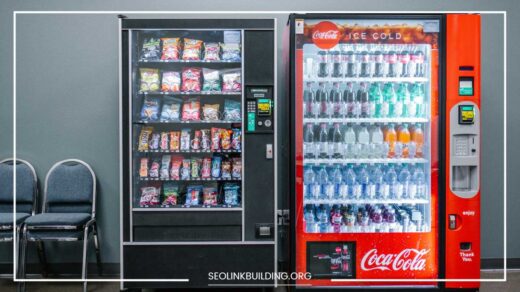How to Get to the Top of Google Search Results

Get to the Top of Google’s Search
How to Get to the Top of Google’s Search Results: A Comprehensive Guide
In the contemporary digital environment, securing a top position in Google’s search results is a game-changer for businesses and individuals alike. As the leading search engine globally, Google’s algorithm dictates how web pages are ranked based on various factors.
Mastering these factors can significantly enhance your online visibility, drive organic traffic, and establish credibility.
This comprehensive guide will delve into the nuances of SEO, breaking down each component into actionable strategies to help you ascend to the top of Google’s search results.
Understanding Google’s Algorithm
Google’s algorithm is a sophisticated system designed to deliver the most relevant search results to users. While the precise workings of the algorithm are proprietary and continuously updated, several core factors are consistently influential in determining rankings.
Relevance
Relevance is central to Google’s algorithm. It reflects how well your content matches the user’s search intent. To enhance relevance:
- Keyword Research: Identify keywords and phrases that potential visitors are searching for. Utilize tools such as Google Keyword Planner, Ahrefs, and SEMrush to discover keywords with high search volume and low competition.
- Content Alignment: Ensure that your content addresses the user’s query comprehensively. This involves understanding the context of the search term and providing valuable, relevant information.
Authority
Authority, or domain authority, is a measure of how credible and trustworthy your website is perceived to be. Key elements include:
- Backlinks: High-quality backlinks from authoritative sites act as endorsements of your content. Focus on earning backlinks from reputable websites within your industry through strategies like guest blogging, influencer collaborations, and partnerships.
- Content Quality: Regularly produce high-quality, well-researched content that positions your site as an expert in your field. The more valuable and informative your content, the more likely other reputable sites will link back to it.
User Experience
User experience (UX) encompasses various factors that contribute to a positive or negative experience for users. Google evaluates UX to determine ranking:
- Page Speed: A slow-loading website can frustrate users and negatively impact rankings. Optimize images, leverage browser caching, and minimize server response times to enhance page speed.
- Mobile-Friendliness: With the majority of searches conducted on mobile devices, ensuring your site is mobile-friendly is crucial. Use responsive design to make your site accessible and functional across various devices.
- Navigation: A clear, intuitive navigation structure helps users find information quickly and easily. Implement a logical site hierarchy and user-friendly menus.
Backlinks
Backlinks are a fundamental component of SEO. They serve as endorsements from other websites, signaling to Google that your content is valuable. To build a strong backlink profile:
- Quality Over Quantity: Focus on acquiring backlinks from high-authority sites rather than a large number of low-quality links.
- Link Building Strategies: Engage in outreach efforts such as guest posting, collaborating with industry influencers, and creating shareable content to naturally attract backlinks.
On-Page Optimization
On-page optimization refers to the techniques applied directly on your website to enhance search engine rankings. Key strategies include:
Keyword Research
Effective keyword research is the cornerstone of successful on-page SEO. Start by:
- Identifying Target Keywords: Use keyword research tools to find keywords relevant to your industry and audience. Look for keywords with a balance of search volume and competition.
- Analyzing Competitors: Examine the keywords your competitors are targeting and identify opportunities for differentiation.
Keyword Placement
Strategically placing keywords within your content helps Google understand the topic of your page. Key areas to focus on:
- Title Tag: Incorporate primary keywords in the title tag. The title should be engaging and accurately reflect the content of the page.
- Meta Description: Write a compelling meta description that includes relevant keywords. This description appears in search results and can influence click-through rates.
- Headings and Subheadings: Use headings (H1, H2, H3) to organize content and include keywords where appropriate. This helps both users and search engines understand the structure of your content.
- Body Text: Integrate keywords naturally into the body of your content. Avoid keyword stuffing, as it can negatively impact readability and SEO.
Content Quality
High-quality content is essential for engaging users and improving SEO. Focus on:
- Originality: Produce unique content that offers new insights or perspectives. Plagiarized or duplicated content can harm your rankings.
- Depth and Detail: Provide comprehensive coverage of topics. Detailed content is more likely to satisfy user intent and attract backlinks.
- Engagement: Write in an engaging, clear style. Use visuals, such as images and videos, to enhance user engagement.
Meta Tags
Meta tags are HTML elements that provide metadata about your web pages. Optimize:
- Title Tag: Keep the title tag under 60 characters and include primary keywords. It should be descriptive and compelling to attract clicks.
- Meta Description: Craft a meta description of 150-160 characters that includes relevant keywords and entices users to click through.
Heading Structure
Proper heading structure enhances readability and SEO. Implement:
- H1 Tag: Use the H1 tag for the main title of your page, incorporating primary keywords.
- H2 and H3 Tags: Use H2 and H3 tags for subheadings, organizing content and improving readability.
Image Optimization
Images contribute to user experience and SEO. To optimize:
- File Names: Use descriptive, keyword-rich file names for images.
- Alt Text: Include descriptive alt text for each image. Alt text improves accessibility and provides context for search engines.
URL Structure
A clean, descriptive URL structure aids both users and search engines. Ensure:
- Keyword Inclusion: Include relevant keywords in URLs to signal content relevance.
- Readability: Create URLs that are easy to read and understand, avoiding complex query strings.
Off-Page Optimization
Off-page optimization involves external factors that influence your website’s authority and reputation. Key strategies include:
Backlink Building
Building high-quality backlinks is crucial for improving authority and rankings. Strategies include:
- Guest Posting: Write guest posts for authoritative blogs and websites in your industry. This can provide valuable backlinks and exposure.
- Directory Submissions: Submit your website to reputable business directories.
- Influencer Outreach: Collaborate with influencers to gain backlinks and promote your content.
Social Media Marketing
Social media can enhance visibility and drive traffic. Effective strategies include:
- Content Promotion: Share your content on social media platforms to increase reach and engagement.
- Community Engagement: Interact with your audience, respond to comments, and encourage shares and mentions.
Local SEO
For businesses with a physical presence, local SEO is essential. Optimize for local search by:
- Google My Business: Create and optimize your Google My Business profile to appear in local search results and Google Maps.
- Local Citations: Ensure consistent business information across local directories and review sites.
Technical SEO
Technical SEO addresses the backend aspects of your website that impact search performance. Key areas include:
Website Speed
Page speed is critical for both user experience and search rankings. To improve speed:
- Optimize Images: Compress and resize images to reduce load times.
- Minimize Code: Remove unnecessary code and scripts to streamline your site.
- Leverage Caching: Implement browser caching to improve loading times.
Mobile-Friendliness
Ensure your website is optimized for mobile devices:
- Responsive Design: Use responsive design techniques to ensure your site adapts to different screen sizes.
- Mobile Testing: Regularly test your site on various mobile devices to identify and fix issues.
XML Sitemap
An XML sitemap helps search engines crawl and index your site. To use:
- Create and Submit: Generate an XML sitemap and submit it to Google Search Console and other search engines.
- Monitor Indexing: Check for errors and ensure that all important pages are indexed.
Robots.txt
The robots.txt file guides search engines on which pages to crawl. Use it to:
- Manage Crawling: Control which pages are indexed and prevent search engines from crawling duplicate or irrelevant content.
- Optimize Site Performance: Avoid overloading search engines with unnecessary crawl requests.
HTTPS
Implement HTTPS to secure your site and build user trust:
- Encryption: Encrypt data exchanged between your site and users to protect sensitive information.
- Trust Signals: HTTPS can improve user trust and enhance your site’s credibility.
Content Marketing
Content marketing is about creating valuable content to attract and engage your target audience. Effective strategies include:
Blog Posts
Regular blog posts can drive traffic and improve SEO:
- Topic Relevance: Write about topics relevant to your audience and industry.
- Frequency: Publish new content consistently to keep your audience engaged and improve search rankings.
Videos
Videos are a powerful medium for engaging users:
- Content Types: Create tutorials, product demos, and informational videos to provide value.
- Optimization: Optimize video titles, descriptions, and tags with relevant keywords.
Infographics
Infographics are effective for presenting complex information visually:
- Design: Create visually appealing infographics that simplify data and make it easily digestible.
- Shareability: Infographics are highly shareable and can attract backlinks.
Case Studies
Case studies showcase real-world applications of your products or services:
- Success Stories: Share detailed success stories to highlight the benefits of your offerings.
- Customer Testimonials: Include testimonials and results to build credibility.
Email Marketing
Email marketing helps maintain engagement with your audience:
- Newsletters: Send regular newsletters with updates, tips, and valuable content.
- Personalization: Tailor emails based on user behavior and preferences for higher engagement.
Measuring and Tracking Your Progress
To gauge the effectiveness of your SEO efforts, use analytics tools:
Google Analytics
Google Analytics provides insights into:
- Traffic Sources: Understand where your visitors are coming from and adjust your strategies accordingly.
- User Behavior: Track how users interact with your site to identify areas for improvement.
- Conversion Tracking: Monitor conversion rates and assess the effectiveness of your calls to action.
Google Search Console
Google Search Console offers data on:
- Search Performance: Track your site’s performance in search results and identify high-performing queries.
- Indexing Issues: Detect and resolve issues affecting site indexing.
- Backlinks: Monitor the quality and quantity of backlinks pointing to your site.
Advanced Strategies for SEO Success
To further enhance your SEO efforts and stay ahead of the competition, consider implementing advanced strategies:
Voice Search Optimization
With the rise of voice assistants, optimizing for voice search can provide a competitive edge:
- Natural Language: Use conversational language and long-tail keywords that reflect how people speak.
- Featured Snippets: Aim to rank in featured snippets by providing concise, valuable answers to common questions.
Schema Markup
Schema markup helps search engines understand the content on your pages:
- Structured Data: Implement schema markup to enhance search results with rich snippets, such as ratings, reviews, and event details.
- Increased Visibility: Rich snippets can improve click-through rates and drive more traffic to your site.
Competitor Analysis
Regularly analyze your competitors to identify opportunities and gaps:
- Keyword Gaps: Discover keywords that your competitors are ranking for and target those keywords in your content.
- Backlink Profile: Evaluate your competitors’ backlink profiles to find potential link-building opportunities.
Content Repurposing
Repurpose existing content to reach new audiences and improve engagement:
- Format Variations: Convert blog posts into videos, infographics, or podcasts to cater to different content preferences.
- Updated Content: Refresh old content with new information and optimize it for current SEO best practices.
Final Thoughts
Achieving a top ranking on Google’s search results requires a multifaceted approach to SEO. By understanding the core elements of Google’s algorithm, optimizing on-page and off-page factors, addressing technical aspects, and leveraging content marketing, you can significantly enhance your website’s visibility and attract more organic traffic.
Additionally, staying informed about the latest SEO trends and continuously refining your strategies will ensure sustained success in the ever-evolving digital landscape.
Implement these strategies consistently, monitor your progress, and adapt to changes to stay ahead of the competition and achieve your SEO goals.













